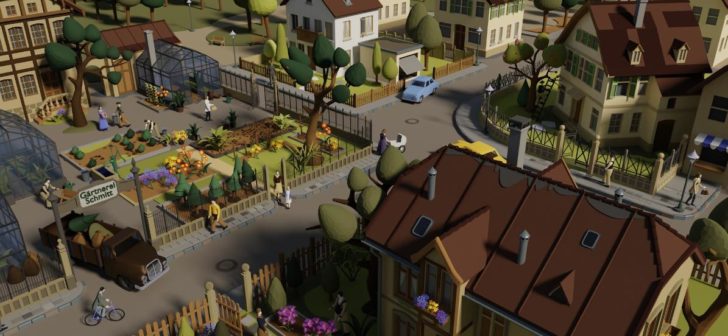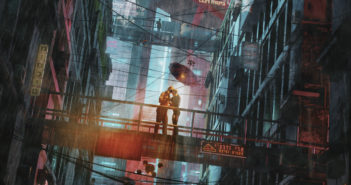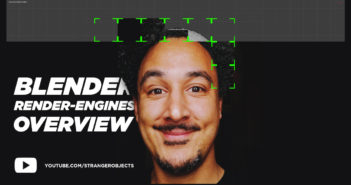About
I started as an art teacher and work as a museum education officer in Munich. I studied art and art history and discovered 3D many years ago. I began with SketchUp and switched to Blender. Trying to learn the 2.3 version by myself was hard work but I have gotten used to Blender over the years.
I use Blender for my personal projects and sometimes for educational purposes in museums. I regularly offer courses for beginners in the German “Blenderschool” and advertise Blender as continuing education for art teachers. Working closely together with Eva Vomhoff, we produced a short animated film “Totentanz“ (Dance of Death). I am fascinated by the possibilities of Blender and I am not restricted to a certain style. The suburban scene is part of a series of low poly models that I published on blendpolis.de.
Suburban Scene
I get my inspirations from art history and all sorts of pictures and models. Blender gives me the chance to concept pictures like little models. That's because I like low poly so much. You can always see the geometric structure behind the different objects.
The suburban scene was made for a beginner’s course to demonstrate the advantages of modifiers and non-destructive modeling. The .blend file has ca. 460,000 faces because of the mass of details. But as I used no textures, it works quite well, even on laptops.
Starting Point
I developed a personal artistic workflow. It's a bit like painting a picture.
Starting points: a ground floor, a central object, and some details scattered around. Positioning the camera, I chose the distance to the scene, the height of the view, and how the main lines would convert. I selected a certain range of colors and tried out the light (late afternoon, medium intensity, warm color). I used two suns: a warm intensive for sunlight and a cold from the opposite direction to light the shadows. For larger areas, I prefer Cycles as the renderer.
Step-by-Step
I let myself be inspired by the empty areas between the simple houses, the roads, and the trees.
For orientation in scale, I placed some simple figures appended from other files. I always use modifiers to save time. The mirror modifier is perfect to construct houses and to distribute the windows symmetrically. The solidify modifier gives the roofs a certain thickness, especially useful for complex shapes.
Repeating an icosphere tree in a line with an array modifier tends to look a bit boring. So I:
- unified two trees with different colors into one object,
- varied the icosheres with a simple deform modifier,
- duplicated them with an array modifier,
- added an empty and connected it with the object offset of the array modifier,
- turned and scaled the empty.
The forms of the faces differ a bit on the trees in the foreground. Eva gave me a hint on how to do this. You put a subdivision modifier on the icosphere and combine it with a decimate modifier. Playing around with the parameters, you get different patterns.
A Lot More Modifiers
All the plants and stones looked like a lot of copy-and-paste. But the stony bed is made with a particle system. The leaves of the plants rotate around a scaled empty with an array modifier. Fences are made with solidify, array, and curve modifiers to make them follow the corners of the streets.
Little Stories
A scene without people always looks a bit lonesome. Adding some figures helps, but it is much more fun to tell little everyday stories: a man crops an apple tree, gardeners do their work in the market garden, etc. In a very detailed scenery you easily get visual overload. So I tried to alternate with more empty areas like streets and roofs.
At first sight, the picture looks detailed but technically simple. Combining modifiers is sometimes quite tricky. In the end, though, it saves a lot of time.
About the Author
 Dr. Alfred Czech, Museum Education Officer and 3D Artist
Dr. Alfred Czech, Museum Education Officer and 3D Artist










4 Comments
That's a really charming scene! I like to look at it as much as I liked to browse these kind of pictures in the model-railway catalogues in my youth. As you're from Germany, too, you will surely know the Faller, Kibri and Vollmer Catalogues. I really got a kind of warming flashback looking at your scene ;-)!
Thank for sharing my foundness for model-railway-style. I will post another picture soon inspired by an architecture exibition named "märklin Moderne".
This is FANTASTIC!! Well done!!
Thanks a lot!